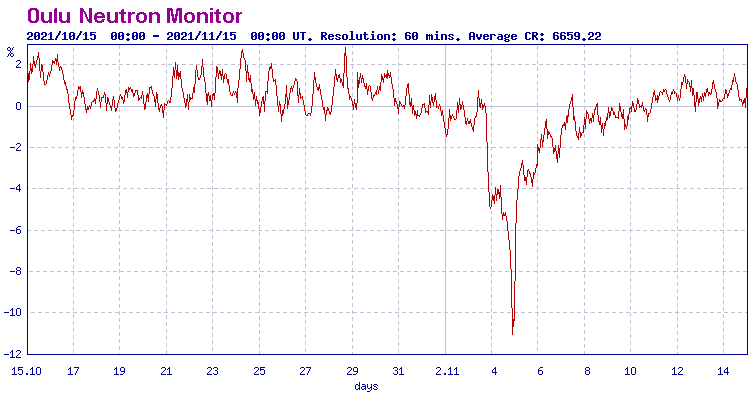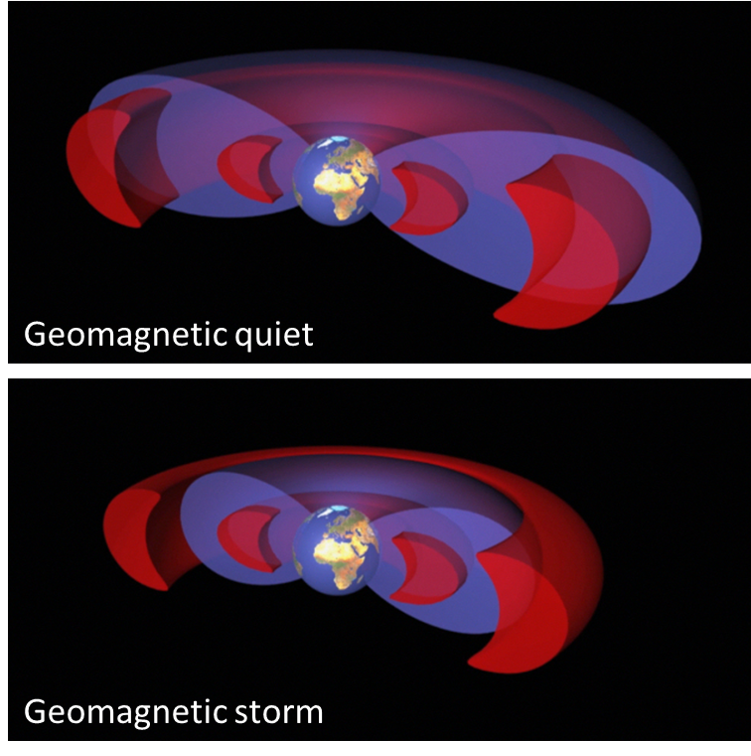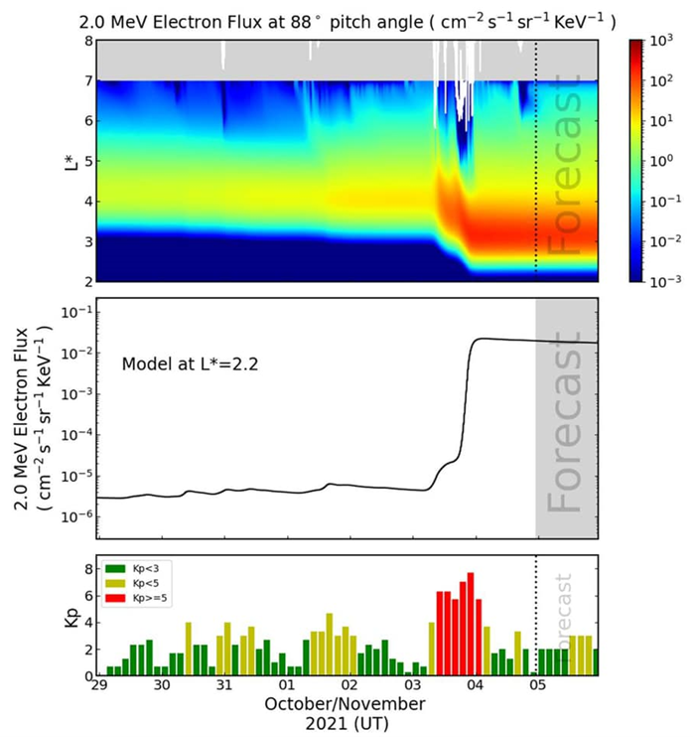Solar activity was enhanced late October and early November, with the 2nd X-class flare, the 2nd proton event and the first Ground Level Enhancement (GLE) of the current solar cycle (SC25) - as extensively discussed in this Newsitem. Several coronal mass ejections (CMEs) were associated with the flaring activity during this period, as can be seen in the SOHO/LASCO (CACTus) coronagraphic imagery underneath. In particular, a fast earth-directed CME associated with flaring activity in NOAA 2891 on 2 November was thought to catch up with slower CMEs related to flaring events in NOAA 2887 on 1 November. This type of CME is called a cannibal CME as it overtakes the slower CMEs in front of it, thus creating more complex and enhanced magnetic fields which may result in stronger geomagnetic storms than one would expect.

The catching-up and subsequent propagation towards Earth can be seen in images made by the Heliospheric Imager 2 (HI-2) onboard the STEREO-A spacecraft, which is currently trailing the Earth by about 37 degrees. The HI-2 instrument has a 70 degrees field of view and is off-pointed from the Sun direction by 53.7 degrees, with its optical axis aligned in the ecliptic plane. This arrangement provides coverage by HI-2 over solar elongation angles from 18.7 to 88.7 degrees at the viewpoints of the spacecraft, thereby allowing the observation of Earth-directed CMEs along the Sun–Earth line to the vicinity of the Earth and beyond (Eyles et al. 2009). The difference images (one image subtracted from the previous) underneath show - in the plane-of-the-sky as seen by STEREO-A - how the "slow" CME gets gobbled up by mainly the southern portion of the "fast" CME which then continues its transit towards the Earth.

The interplanetary CME (ICME) arrived at 19:24UT on 3 November when a shock was observed in the solar wind. The shock drove the greater than 10 MeV proton flux back above the alert threshold of 10 pfu (20:55UT), but too briefly (only one single 5-minutes data point...) to be recognized as a genuine proton event. Solar wind speed went up well over 700 km/s with some periods of significant and sustained southward magnetic field orientation, Bz getting as low as -18 nT. This resulted in a strong geomagnetic storm with the Dst index reaching -115 nT and as such descending for the first time this solar cycle under -100 nT (Kyoto World Data Center). The magnetic shielding provided by this strong ICME resulted in a significant decrease in the harmful cosmic rays, as recorded by neutron monitors around the world (a so-called "Forbush decrease"). The neutron monitor in Oulu, Finland showed a brief but sharp decrease of 11% in the 1-hour count rates compared to undisturbed levels (see graph below).

In response to these particular solar wind conditions, the high-energy (greater than 2 MeV) electron flux didn't take long to also start an increase, although the fluxes remained relatively modest. Measured by the GOES satellites in their geostationary orbit, which is located in the Earth’s outer radiation belt, these electrons are associated with a type of spacecraft charging referred to as deep-dielectric charging. The electrostatic discharges that may occur between the electronic components may cause anomalous satellite behavior which may in turn result in a temporal or complete impairment of a satellite. Hence their nickname "killer electrons". See the SWx Classification page and this STCE Newsitem for more info. In this case though, the mild fluxes that were recorded did not harm any satellite.

Interestingly, also a mild excursion of the outer radiation belt into the slot region was observed. This is a region between the inner and outer radiation belt which is usually devoid of high-energy particles and a kind of safe haven for satellites. In fact, the electrons that are present there belong to the plasmasphere, a doughnut-shaped region of low energy charged particles (cold plasma) centred around the planet's equator and rotating along with it. The ESA sketch above shows for geomagnetically quiet (top) and disturbed (bottom) conditions the radiation belts in red and the plasmasphere in blue.
The gentle movement by the outer radiation belt into part of the slot region started on 3-4 November, as suggested by the observations-driven Radiation Belt Model from the British Antarctic Survey (BAS-RBM), available at the ESA/SSA website (SSA: Space Situational Awareness). The top chart below shows from 29 October till 5 November the evolution of the 2 MeV electron flux (colored) in the slot region and outer radiation belt, characterized by the L*-shell (vertical axis) which -for the purpose of this article- can be understood as the distance to the Earth's centre expressed in earth radii. The middle graph shows the electron flux at L*=2.2 proper, while the lower graph shows the Kp index for the same period.
As the ICME arrived late on 3 November and the strong geomagnetic storm developed (Kp ranging from 5 to 7), the number of high-energy electrons started to increase (orange) and the outer radiation belt moved closer to Earth into the slot region. This situation persisted for a few days before recovering to the nominal state. Further analysis revealed that, whilst the model suggested that the slot region had been filled, in-orbit data from missions such as ARASE indicate that this was probably not the case in this particular event. Regardless, the event itself and the output that models such as the BAS-RBM provide, are an exciting insight into what we can expect as Solar Cycle 25 progresses towards its maximum. We truly have a front row seat now to watch future developments of this dynamic portion in the magnetosphere!

This article was written with the kind contribution from Dave Pitchford (SES).





